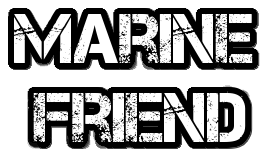MARINE FACTS
How do we produce fresh water on ships.

How do we produce Fresh Water On Ships?
If you see behind me you’ll see a lot of water
but as one English poet said “Water Water Everywhere But Not
A Drop To Drink”
It’s kind’s the same thing with us.
There’s water everywhere but we can’t drink it.
That’s exactly the time you need engineers to do something
for you.
And Engineers have designed Fresh Water Generator.
There’s Seawater all around us, we can’t use it or drink
it.
because it’s not just Salty. it’s corrosive too.
Drinking a large amount of this water can be deadly.
Now a little bit of technical Stuff
All the kids who have studied chemistry but be aware that
the density of fresh water is 1.00000
The density of seawater is more than ONE
It can be 1.001 up to 1.025.. 1.029 .. 1.028
Commonly it is 1.025
Now the task at hand is to remove all Salts from this sea
water.
Remove all the impurities .. all the solids.
that are making this Water – Sea Water
When you’ll remove all of them, you’d be left with only
Fresh Water.
But even after removing all those impurities, this water is
still not fit for human consumption.
We have to treat it further with chlorine and chemicals to
make it fit for human consumption.
It’s time to head to the Engine Room
This is the Engine Control Room and we’re here to show you
Fresh Water Generator.
All engine controls are here
This is the place from where they run & control the engine.
All parameters are visible on these panels.
Talking about the Fresh Water Generator, here you can see
it.
One of our pumps sucks that seawater around us and sends it
to Heat Exchanger
We can run FWG (Heat Exchanger) via two mediums
One of those mediums is Hot Water coming from our Main
Engine
Once this Hot Water circulated through Heat Exchanger
plates, it evaporates incoming Sea Water
Water will evaporate from sea Water in form of Steam and all
solids /impurities will remain behind.
The second option is to use incoming steam from boilers to
perform this heat exchange.
Again this steam will exchange heat inside Heat exchange
In a similar way seawater will again evaporate and solids
will remain behind.
And only water will evaporate and go to the condenser
From there, our Freshwater pump will collect it and send it to
our Fresh Water Collection Tank.
Before collection, in the Storage tank, we have to decide what
quantity of water we have to use for domestic purposes
and what quantity needs to be processed for drinking water
purposes.
The water used for drinking is called… well. Drinking
Water
ALSO READ: Why a Ship’s bottom is Painted Red?
Drinking water is passed through a sterilizer and treated with
chlorine and other chemicals.
The specific quantity of those chemicals are used to make the
water drinkable.
We have a drinking water test kit to analyze the quality of
drinking water.
We approximately produce 23 to 24 Metric Tons of Fresh Water
Daily.
There are 26/27 people inboard so this quantity of water is
enough for them, Plus freshwater is used in machim=nery as
well.
The excess amount of produced freshwater is stored in the
Fresh Water Tanks
We Can store approximately 400 – 450 MT of Fresh Water
This excess Freshwater is used when the vessel is drifting
or at anchor.
This is the pipe used for filling Fresh Water in Freshwater
tank port side (Left side of Ship).
This thing on the side is a remote level indicator.
It helps our engineers to monitor the level of freshwater
inside the tanks remotely.
Chief engineer: What Happened??
Chief Officer: We Have come for your interview.
This Fresh Water Generator on board basically produces
Fresh Water from Sea Water.
The seawater has approximately 30,000 PPM (Parts per
million of Chlorides) that we convert to water having only
2 PPM chlorides.
This water can then be used as Domestic water and Drinking
Water
It is Pure and equivalent to distilled water.
Basically, we are boiling the Sea Water, once boiled it
evaporates, this evaporated water (Steam) is then cooled.
This cooled steam condenses in form of droplets of distilled
water.
Those droplets are then collected, this is the simple
principle of Sea Water conversion.
To do all of that we have a heat exchanger.
Generally, we use hot water from our Jacket Cooling Water
System to boil Sea Water inside Heat Exchanger.
The temperature of that (Jacke Cooling Water) has a
the temperature of 80-85 degrees Celcius.
When this hot water passes through a Heat Exchanger it boils
seawater.
You might ask how will the seawater boil and evaporate at
80-85 degrees Celcius.
here’s how this heat exchanger is situated in a vacuum
chamber
Due to vacuum in this chamber the boiling point of sea
water comes down
and seawater boils at 60-70 degrees Centigrade
and as the temperature is raised to 80 Degrees it becomes
steam.
Then we have to cool this steam down
For cooling it we send it to another system called
condenser.
This steam then passes through the condenser .. Condenses.
and gets collected over there in the form of water.
we take that water then and fill up our tanks.
To make it drinkable we pass it through a sterilizer and use
chemicals.
And then we use this water for domestic and drinking
purposes.
A piece of important machinery where we use this water is Boilers.
For use in Boilers, we need to have pure distilled water
That also we are getting via Fresh Water generator, we get
pure distilled water.
Hence Fresh Water Generator gives us the water that we need for
our domestic and machinery use.
Thank you very much Mr. Chief Engineer.
This was our Engine Room tour.
I showed you Fresh Water Generator and tried explaining it’s
the working principle in simple language.
The way we produce Fresh Water on a ship.
The ship is huge machinery.
It’s a complete City.
We have to have these things.
Sometimes our voyages are months long.
What will we do if we don’t have a Fresh Water Generator?
So this (Fresh Water Generator) is very much required.
I hope you must have enjoyed this article and must have
learned something new.
If So, consider liking and sharing this post.
-

 SEAFARERS4 years ago
SEAFARERS4 years agoBsid dg shipping email id and contacts
-

 SEAFARERS4 years ago
SEAFARERS4 years agocommerce se merchant navy kar sakta hai kya?
-

 RPSL4 years ago
RPSL4 years agoBlacklisted RPSL companies 2021/2022/PART-2
-

 COLLEGES4 years ago
COLLEGES4 years agoGp rating college list approved by dg shipping in india
-

 PSCRB2 years ago
PSCRB2 years agoPSCRB exit Exam MCQ-1
-

 RPSL4 years ago
RPSL4 years agoBlacklisted RPSL companies 2021/2022/PART-1
-

 RPSL4 years ago
RPSL4 years agodg shipping approved company
-

 RAFF2 years ago
RAFF2 years agoRefresher AFF Exit exam Questions and Answers PDF 1








